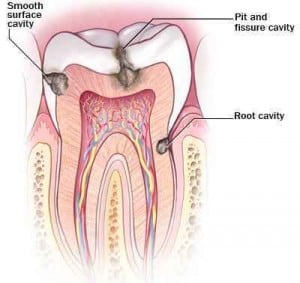When to Remove Wisdom Teeth
Although most people seem to need their wisdom teeth removed, it’s not always necessary. It’s important to remember that removing wisdom teeth is not always recommended. However, there are many reasons why you might want your wisdom teeth removed, such as: They cause crowding and orthodontic problems They cause pain They have become infected They are hard to clean They are impacted (stuck) and can’t fully emerge Often, your dentist can tell your wisdom teeth will cause problems before they happen. It’s best to listen to your dentist in this case to avoid more trouble later on. Getting Your Teeth Checked You should be visiting the dentist at least once a year from the age of two, and by the time you’re a teen, you should have visits to the dentist twice a year just like an adult. During your regular visits, your dentist will check on the state of your wisdom teeth and look at them for any problems. At about age 16-19 is when your dentist can usually tell if there will be problems with your wisdom teeth. Some people may have obvious signs of trouble earlier than this, while others may not see any problems through their 20s. People who experience no problems with wisdom teeth by the age of 30 may be able to keep them for life. You may have all four wisdom teeth removed at once, or just some of them. Sometimes wisdom teeth left in today may have to be removed at a later date. Some dentists may recommend removing your wisdom teeth before the age of 20 to make it easier, but in reality they can be removed at any age. If you are experiencing problems with your wisdom teeth and want to talk about having them extracted, please contact Ascent Dental in Denver, Colorado today for an appointment.
85% don't make it!
Wisdom teeth, or third molars, are the last teeth to erupt in your mouth and are the teeth least needed for good oral health. Most people have four wisdom teeth that usually erupt through the gums in their late teens or early twenties. Sometimes wisdom teeth remain trapped in the jawbone under the gums because there is insufficient room for them to erupt. Wisdom teeth can cause gum disease, crowding or other damage to adjacent teeth, decay (due to the inability of your toothbrush to keep the area clean), and bone destroying cysts. Pain and swelling are the most common symptoms of problem wisdom teeth. Whether you have obvious symptoms or not, it is important to diagnose existing or potential problems caused by your wisdom teeth. Ultimately, at one time or another, its been shown that 85% of all wisdom teeth are removed due to crowding, gum disease and cavities. If they are in, and there is room for them, these usually go on to develop large cavities, as cleaning them is challenging. Waiting to have them removed after your 30’s can go on to become more challenging with longer healing times. We urge you to do this in your teens and 20’s. Removal is the wisest decision for your health and well-being. We can removed them for you, before they cause problems! Make your appointment today! This video can explain it.
Most Dental Problems are Silent

Daily, I get asked from patients, if I am not having pain, why do I have to get a filling? Like cancer and heart disease in the body, most dental problems are silent. Lets look at a few silent dental problems. Cavities When a cavity starts to hurt, that is when it is almost too late to just simply do a filling! Cavities do no hurt until they get close to the nerve in the tooth. The tooth has 2 layers to protect the nerve, the enamel and the dentin. The enamel is one of the hardest elements of the human body, its amazing to think microscopic bacteria can destroy it. Once the bacteria sets up in the dentin of the tooth, the tooth can literally become an eggshell and still look like nothing is wrong. The longer the bacteria sit inside the tooth, the more they destroy by their acid secretion/waste. The bacteria work their way through the dentin to the nerve. This is when pain can start. By then, the nerve has bacteria in it and an infection develops at the root tip of the tooth. The only way to save this tooth now is a root canal and crown, when a filling would have been more simple and cost effective. The assumption is if the tooth doesn’t hurt, it doesn’t need to be fixed Gum Disease Gum Disease is bacteria, plaque and tartar, that develops under the gums. The bacteria also secrete a substance that can kill and destroy bone structure around the teeth. As painful as that sounds, it can present no pain. With destroyed bone around the teeth, teeth can eventually get lose and fall out. Generally, this process can take 5-15 years, but can also happen rapidly, depending on diet, hygiene, bacteria levels in the mouth, etc. Existing Root Canals Once a root canal is completed, there is no more nerve in the tooth. At the bottom of the tooth (the root tip) is where a infection can set up. Bone doesn’t have nerves like tissue does, so therefor if there is an infection underneath a root canal, it can’t be felt. Once this gets to a large level, prognosis of retreating the root can decrease. Implants Dental implants can get gum disease around them and fail as well. Anytime a dental implant becomes loose, its a failure. So, the point of this blog is for me to show you examples of why and how most dental problems are silent. After any dental work is completed it should be checked yearly with an x-ray. The more dental work you have completed, the more work it takes to keep the work lasting. Don’t take chances and see a dentist routinely, so we can get to the problem, before other major problems creep up on you.
